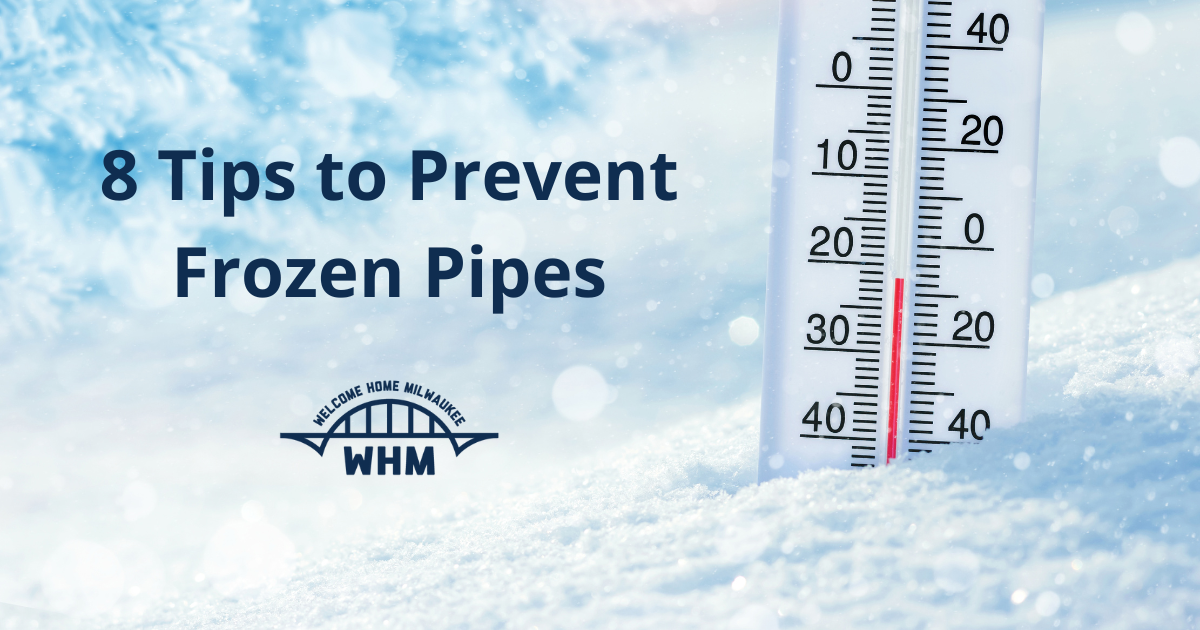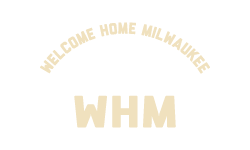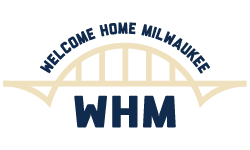
16 Jan 8 Tips to Prevent Frozen Pipes
As winter sets in and temperatures plummet in Milwaukee, the risk of frozen pipes becomes a real concern. Frozen pipes can lead to significant damage and costly repairs. Fortunately, taking some preventive measures can help you safeguard your plumbing system during the frigid winter months. In this short blog, we’ll discuss practical tips to prevent frozen pipes and ensure a smooth winter season.
-
Keep a Consistent Temperature:
Maintain a consistent temperature inside your home, especially during extremely cold days and nights. Set your thermostat to a temperature above freezing, even when you’re away. This will help keep your pipes warm and reduce the risk of freezing. Make sure that the batteries in the thermostat are working properly and replace them if necessary.
For those with a forced air furnace, replace the filter to make sure it’s running at maximum efficiency. (Learn how in this blog!)
-
Keep your Home Cozy When Away:
When leaving your home in cold weather, a crucial step is to set the thermostat no lower than 55°F. This prevents frozen pipes, protects your property from potential damage, and ensures a comfortable return. This small adjustment serves as a valuable investment in the well-being and security of your home during your absence.
-
Seal Leaks and Cracks:
Inspect your home for any gaps, cracks, or openings that allow cold air to get in. Seal these gaps with caulking or weather-stripping to prevent cold air from reaching your pipes. Pay special attention to areas where pipes enter your home and ensure they are properly sealed.
-
Allow Faucets to Drip:
Allowing faucets to drip slowly can help prevent pipes from freezing. Running water, even at a slow trickle, reduces the chances of pipes becoming stagnant and freezing. This is especially important for faucets along exterior walls or in unheated areas.
-
Open Cabinet Doors:
In areas where pipes are located in cabinets, such as under the kitchen sink, open the cabinet doors to allow warm air to circulate around the pipes. This can be particularly beneficial during extremely cold nights. This is especially important for cabinets along exterior walls.
-
Disconnect and Drain Outdoor Hoses:
Before winter arrives, disconnect and drain outdoor hoses. If left connected, water can freeze in the hose and back up into the pipes inside your home, causing them to freeze. Store hoses indoors during the winter months.
-
Close Your Storm Windows:
During colder seasons, ensure that your storm windows are securely closed. Storm windows provide an additional layer of insulation, helping to create a barrier against cold outdoor air. Make it a part of your seasonal routine to inspect and close all storm windows before the onset of colder weather.
-
Optimize Sunlight and Insulate at Night:
During the day, open blinds, curtains, and shades to leverage natural sunlight, creating a well-lit and inviting atmosphere. As temperatures drop at night, close them to retain accumulated heat, forming a thermal barrier that prevents heat loss. Choose heavier curtains or layered coverings for enhanced insulation, ensuring a comfortable and energy-efficient home.
Taking the time to prepare your home for winter can save you from the inconvenience of dealing with frozen pipes. By following these tips, and maintaining a consistent temperature, you can enjoy a worry-free winter in Milwaukee, knowing that your plumbing is well-protected against the harsh winter conditions. Remember that Welcome Home Milwaukee is here to help, if you need help with an emergency such as frozen pipes you can call our emergency line at 414.216.3024




Sorry, the comment form is closed at this time.